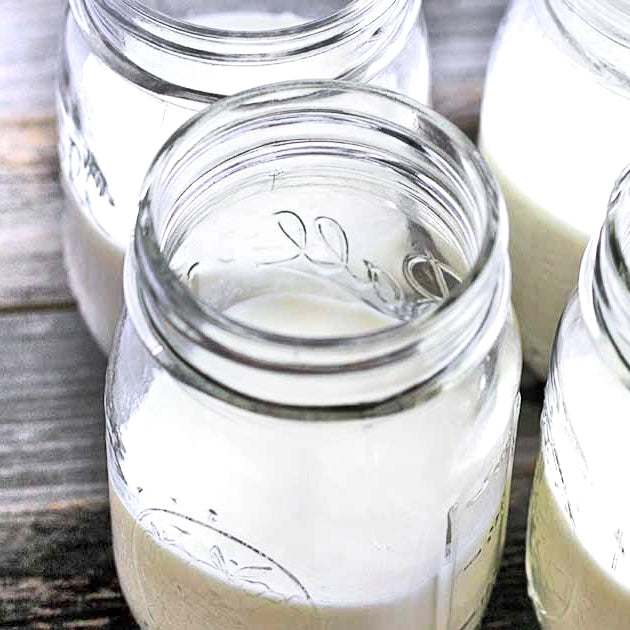
One of the biggest concerns when starting out with homemade kefir is whether the kefir will go bad or moldy.
Tasting or smelling spoiled milk really makes a lasting impression in people's mind and that fear is hard to break when starting kefir. Just leaving most any food out at room temperature usually results in mold eventually (besides perhaps a big mac), so why doesn't kefir follow those rules?
Obviously the process of making kefir is designed to stop the spoilage of the milk, but its also incredibly resistant to mold contamination.
Once in a while, usually under abnormal conditions, there may be mold on veggie ferments, kombucha, sourdough etc. Even more rare though is mold on milk kefir. And with water kefir, mold is virtually non-existent. I have yet to see mold anywhere near water kefir.
Why the concern about mold?
Airborne mold is common in both indoor and outdoor air. We typically breath in small amounts of different kinds of mold, like Aspergillus, Cladosporium and Penicillium. It’s usually not a concern unless you are sensitive or allergic to it. Mold and its various forms, is largely responsible for food contamination.
The biggest issue with mold contamination is not so much the mold itself, but the mycotoxins that they produce. These mycotoxins can cause intestinal distress and even alter the microbiome.
With a healthy ferment, there shouldn't be any concern for mold and there's plenty of research to back that up.
Milk kefir study on mold
In one study of milk kefir mold resistance, milk kefir fermenting was enough to make poultry feed highly resistant to mold. After just 24 hours of fermenting, they mixed the fermented whey into a poultry feed and found that it was 2 to 4 times more resistant to mold contamination from Aspergillus as well as other types of mold. It was also shown that the microorganisms that protected against mold were still highly active after 30 days of room temperature storage.
Water kefir study on mold
In a similar study with water kefir, the high resistance against mold was demonstrated. They fermented the water kefir mixture for 7 days and added it to sorghum in a type of mini-silo. The control and sterilized water kefir mixture allow mold to propagate quite significantly. However, the mini-silo with the active water kefir mixture almost completely halted all mold contamination.
Why does kefir inhibit mold so effectively?
Kefir have bacteria, yeast and fermentation by-products that all contribute to stopping mold growth.
1. The first part of the fermentation process belongs more to the yeast. They pave the way for the bacteria by splitting the sugar and causing oxygen depletion. Mold loves oxygen rich environments so the lack of oxygen makes it much harder for the mold.
2. Once the lactic acid bacteria starts munching on the glucose, they start producing acids and lowering the pH which in turn makes its harder for the mold.
3. And finally, the active bacteria and yeast as well as all the by-products of the ferment creates an environment that furthers the resistance to mold.
All 3 of those processes combine to make an environment very hostile to mold and that's why you rarely (if ever) see it with kefir.
Bottom line
When you think about letting milk sit out for a day, you may be concerned about mold. However, when it comes to kefir, both milk kefir and water kefir, the chances of mold contamination is incredibly low (especially for water kefir). The yeast lowers the oxygen and the bacteria lowers the pH and both make it hostile to mold. Also the many microbials of the ferment are also highly resistant to mold.
If you are extra concerned about mold for any ferment, try a closed ferment. Not only will it block outside mold, it will lower the oxygen inside which in turn makes its highly resistant to mold.


Leave a comment